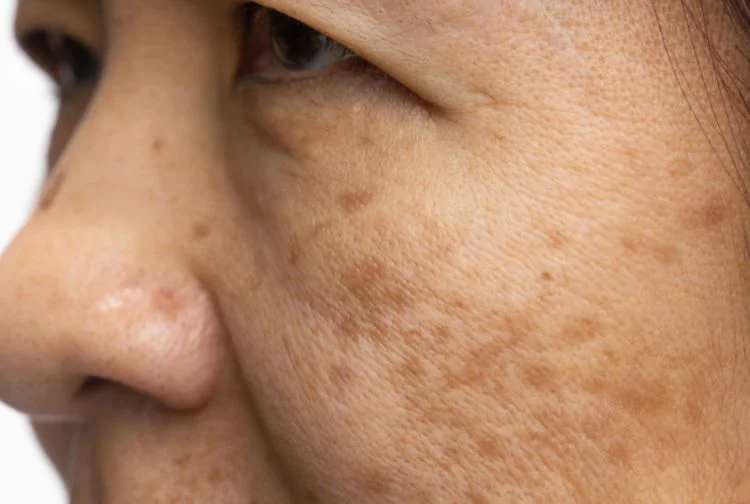Exploring Non-Surgical Dermal Pigmentation Treatments
- Get link
- X
- Other Apps
Dubai’s vibrant aesthetic scene offers an array of non-surgical Dermal Pigmentation in Dubai that cater to various skin concerns. These treatments provide effective solutions for issues such as melasma, sunspots, and post-inflammatory hyperpigmentation without the need for invasive procedures. This guide explores popular non-surgical options available in Dubai, highlighting their benefits, procedures, and what you can expect.
1. Topical Treatments
Hydroquinone
Overview: Hydroquinone is a skin-lightening agent used to reduce the appearance of dark spots and hyperpigmentation by inhibiting melanin production.
Procedure: Applied directly to the affected areas as a cream or lotion. Typically used twice daily.
Benefits:
- Proven efficacy in reducing pigmentation.
- Suitable for various types of hyperpigmentation.
Considerations:
- Use under the supervision of a dermatologist to avoid side effects such as irritation or rebound pigmentation.
- Results can take several weeks to become visible.
Retinoids
Overview: Retinoids, such as tretinoin, accelerate cell turnover and reduce melanin production, improving skin texture and pigmentation.
Procedure: Applied topically as a cream or gel, usually at night.
Benefits:
- Improves overall skin texture and tone.
- Effective for reducing age spots and melasma.
Considerations:
- Initial use may cause dryness or peeling. Gradual introduction helps mitigate these effects.
- Consistent use and sun protection are essential for optimal results.
Vitamin C
Overview: Vitamin C brightens the skin and reduces pigmentation by inhibiting melanin production and providing antioxidant protection.
Procedure: Applied topically as a serum or cream, typically in the morning.
Benefits:
- Brightens skin tone and reduces the appearance of dark spots.
- Provides additional antioxidant protection.
Considerations:
- Use a stable formulation for maximum efficacy.
- Daily application is necessary for best results.
2. Chemical Peels
Mandelic Acid Peel
Overview: Mandelic acid, an alpha hydroxy acid (AHA), gently exfoliates the skin and helps lighten pigmentation.
Procedure: The peel solution is applied to the skin and left on for a specified duration before being neutralized and removed.
Benefits:
- Suitable for sensitive skin due to its mild nature.
- Improves skin texture and tone with minimal downtime.
Considerations:
- Multiple sessions may be needed for optimal results.
- Post-peel care includes avoiding sun exposure and using gentle skincare products.
Glycolic Acid Peel
Overview: Glycolic acid, a stronger AHA, provides deeper exfoliation and is effective for more stubborn pigmentation issues.
Procedure: Applied to the skin in a similar manner to mandelic acid peels, with a slightly higher concentration for deeper exfoliation.
Benefits:
- Effective for moderate to severe pigmentation.
- Results are often visible after a series of treatments.
Considerations:
- May require downtime due to potential redness and peeling.
- Proper aftercare is essential to minimize side effects and support skin recovery.
3. Laser Treatments
Intense Pulsed Light (IPL)
Overview: IPL uses broad-spectrum light to target and break down pigment particles in the skin.
Procedure: Light pulses are applied to the skin, targeting areas with pigmentation. Each session lasts about 20-30 minutes.
Benefits:
- Effective for treating sunspots, age spots, and overall skin tone improvement.
- Non-invasive with minimal downtime.
Considerations:
- Multiple sessions may be required for optimal results.
- Post-treatment redness and swelling are common but typically resolve within a few days.
Fractional Laser
Overview: Fractional lasers create micro-injuries in the skin, stimulating collagen production and targeting pigmentation.
Procedure: A laser device is used to deliver precise energy to the affected areas, creating tiny wounds that promote skin regeneration.
Benefits:
- Effective for deeper pigmentation and overall skin rejuvenation.
- Results improve with each session, with minimal downtime.
Considerations:
- Some redness and swelling may occur post-treatment.
- Multiple sessions are usually needed for best results.
4. Microneedling
Standard Microneedling
Overview: Microneedling involves using a device with fine needles to create micro-injuries in the skin, stimulating collagen production and improving pigmentation.
Procedure: A topical numbing cream is applied before the microneedling device is used to create tiny punctures in the skin.
Benefits:
- Improves pigmentation and overall skin texture.
- Minimal downtime with gradual improvement.
Considerations:
- Results are cumulative and require multiple sessions.
- Proper post-treatment care is necessary to avoid complications and support healing.
Radiofrequency Microneedling
Overview: Combines microneedling with radiofrequency energy to enhance collagen production and treat pigmentation.
Procedure: The microneedling device is equipped with radiofrequency energy, which is delivered to the deeper layers of the skin.
Benefits:
- Provides additional skin tightening and rejuvenation benefits.
- Effective for treating deeper pigmentation issues.
Considerations:
- Some redness and swelling may occur post-treatment.
- Requires multiple sessions for optimal results.
5. Sun Protection
Broad-Spectrum Sunscreen
Overview: Sunscreen is essential for protecting the skin from UV radiation and preventing further pigmentation.
Procedure: Applied daily, ideally with SPF 30 or higher, and reapplied every two hours when exposed to the sun.
Benefits:
- Prevents further pigmentation and protects treated skin.
- Essential for maintaining results and overall skin health.
Considerations:
- Choose a broad-spectrum sunscreen that protects against both UVA and UVB rays.
- Incorporate sunscreen into your daily skincare routine.
Conclusion
Dubai offers a diverse range of non-surgical dermal pigmentation treatments designed to address various skin concerns. From topical treatments and chemical peels to advanced laser therapies and microneedling, there are effective options available to improve skin tone and texture. By consulting with a qualified dermatologist and choosing the right treatment, you can achieve a clearer, more even complexion while avoiding invasive procedures. Remember, consistent skincare and sun protection are key to maintaining and enhancing your results.
- Get link
- X
- Other Apps



Comments
Post a Comment